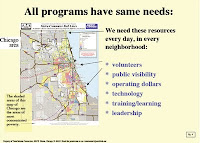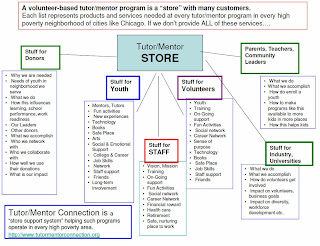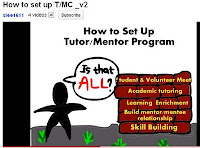Yesterday I titled my post "Does this scare you?" and wrote about the financial challenges of non profits. Last night I attended an anti-violence media forum at Columbia College, titled "Covering Violence. Covering the Solutions." It was co-hosted by Community Media Workshop. The moderator was Natalie Moore, a WBEZ reporter. Panel members included Brenda Butler of Columbia College, John Owens, Chicago Tribune, Gaynor Hall Paterson, WGN/CLTV, Chris Rudd, Mikva Challenge Juvenile Justice Council, and Juliana Stratton, Cook County Justice Advisory Council. About 50 people were in the audience. This was recorded and when I find the link I'll add it to this article.
The meeting started with a video showing emotional responses to violence. The panel members affirmed that Chicago has earned a world-wide reputation for violence. They also expressed concern that no one has found a better way to report this. When it came time to offer solutions, one panel member commented, "writers give headaches, not solutions" and "it's not a reporters job to find the solutions".
One of the final words of advice to community organizations was "Rely on yourselves to tell your own story."
This was really scary. Yet it's a fact.
One person in the audience suggested "every non profit should find time to learn how to get their story to the media." A week ago when I met with the leader of a non profit and suggested they create a blog, the response was "where do I find the time".
The panel asked for solutions. The Chicago Tribune, in a series started a couple of weeks ago, is asking for proposals for a "New Plan for Chicago". I've been providing solutions for many years. Finding more ways to get this information to the public, and to community leaders, is what I want to talk about today. I hope reporters will find time and ways to encourage others to take a look at these.
I've used this graphic often in the past to illustrate the role a single tutor/mentor program takes in connecting volunteers with youth in well organized programs. Such programs need to be located throughout the city, in all of the high poverty neighborhoods.
This graphic also shows the role of intermediaries, like the Tutor/Mentor Connection (T/MC) and Tutor/Mentor Institute, LLC.
Well organized non-school tutoring and/or mentoring programs like Cabrini Connections, Big Brothers Big Sisters, Cluster Tutoring, Chicago Tutoring, Family Matters, Highsight, and many others shown in the directory of Chicago programs that I've hosted since 1994 connect youth who need extra adult involvement with adults who help provide such support.
In the discussion of how media cover violence Chris Rudd of Mikva Challenge offered that media stories give a message to youth that "You don't matter." In my years of leading a volunteer-based tutor/mentor program one of the most important lessons is that one person in the life of a youth can say "You do matter."
If Chicago wants more non-school tutoring, mentoring, arts, youth media, technology and job-training programs available to youth in high poverty neighborhoods, the media need to be telling more stories about the challenges programs face in finding money to fund their operations. In the video leading off last night's event, Phil Jackson, CEO of The Black Star Project was a featured speaker. Yesterday Phil emailed me to say he could not bring a team to the Nov. 4 conference because his organizations is facing financial challenges, meaning they are short of cash!"
I'm no longer leading Cabrini Connections because we ran out of cash too often between 2007 and 2011. Other programs and non profits serving people in high poverty no longer exist for the same reasons.
I created this graphic many years ago to illustrate how any of us who are concerned with violence, education, racial discrimination, social justice, etc. can use our own personal or professional media to encourage the people we know to get informed, then get involved with one or more of the different tutor/mentor programs in the Chicago region.
In 1993 when we developed the strategy for the Tutor/Mentor Connection (read 1994 case statement)our goal was to increase the number of media stories about tutoring/mentoring programs in Chicago. This 1994 article announced that strategy and is one of many media stories shown on this page.
I come from a retail advertising background so in 1993 when we were developing the strategy for the Tutor/Mentor Connection, I understood that without a regular frequency of stories reaching more and more people, we never would be able to generate the awareness, understanding and motivation of the much larger network of supporters needed to provide talent, time and dollars in all of the different neighborhoods where tutor/mentor programs were operating, and where more are needed. Thus, events like the Tutor/Mentor Conference were created as a strategy to generate public awareness and media stories, as well as bring programs together to share ideas.
.
As we went through the 1990s and 2000s I realized that with virtually no money for advertising and/or PR support, my impact would be limited. I also have come to develop an appreciation of the specific needs within every on-going tutor/mentor program. One of my interns created this graphic a few years ago to illustrate the infrastructure needed in each program in order to support on-going tutoring, mentoring and learning
Due to lack of funds most programs simply don't have enough people and talent to focus on all of these functions they way larger corporations or larger non profit organizations do.
Thus, I've looked for other ways to support the growth of these programs.
This graphic represents all of the things that should be part of a well-organized tutor/mentor program. Many of these could be provided by volunteers who offer their talent to support the infrastructure of a program, in addition, or instead of, being a one-on-one tutor/mentor. Thus, accountants could offer pro-bono book keeping and financial services. Journalism students, advertising and public relations professions, including reporters, could take on the story-telling responsibility for one or more organizations. Technologists could take on web site management and tech support responsibilities, adopting all of the programs in a zip code or community area, or just a single program.
Awards could be given each year to recognize who does this well. Blog articles and news stories could tell such stories. This pdf illustrates the potential of influencing constant process improvement by recognizing the good work being done by people supporting non profit organization growth.
I'm not suggesting pro bono projects where a team builds a solution to a problem the non profit proposes, then leaves it up to the non profit to implement the solution. Those things are needed, but I'm suggesting that volunteers, and/or volunteer teams, take on this as an on-going role. Develop the solutions AND implement it!
When Edison and other inventors were creating a working light bulb they experimented thousands of times. Everyone working to reduce inner city violence and keep more kids in school and heading to jobs, rather than out of school and heading to jail, is experimenting. No one has figured out a solution that works all the time.
And one of the biggest problems is that no one has figured out a dependable way to provide "energy" to all of these places on a consistent basis. What I mean by energy is "time, talent and operating/innovation dollars".
While I've been sharing ideas like this for over 18 years, I've found that while the ideas may sound good, and I get many heads nodding approval, most people who work for a living usually can't give away their talent for free, especially on an on-going basis.
And since I've never had a Warren Buffet or Bill Gates, or even one of the leaders of Goldman Sachs, Bain & Co, or other investment bankers in my corner, I've never had the dollars to "ignite the passion" of others who might become intermediaries to provide one, or more, of these solutions.
I'm now in the process of restructuring the Tutor/Mentor Connection, to build a new non profit, with a board of leaders who do have this type of wealth and influence. At the same time, I'm looking for partners and investors to develop the Tutor/Mentor Institute, LLC, so that we could become an incubator of new ideas and solutions that provide the fuel and energy it takes for non profit organizations operating in high poverty, high violence, and high drop out areas, to innovate more effective ways to help kids move through school and into jobs and careers.
I've written a long article and most people won't take time to read it, or pass it on to others who need to be reading it. Last night's meeting ended with a "Rely on yourself to tell your own story" message.
On the We are Not Alone web site are links to videos created by young people, and organizations helping young people become journalists and communicators.
In this link you can find a variety of visualizations created by interns working with me since 2005.
In this PDF I show how maps can be created showing where tutor/mentor programs are needed, what programs exist, and what assets exist in the same zip code who should be supporting the growth of youth mentoring programs in those areas.
If we want to call more attention to solutions, and build a resource flow to make constantly improving youth tutoring, mentoring programs available in more places, teach youth in high schools, colleges and youth programs, in the city, and in the suburbs, to do the following
a) adopt a zip code or community area and create map analysis reports that you post on your own blog;
b) if you are in a high poverty neighborhood, become a reporter of the activities going on every day in the youth organizations you are part of, or write about programs in other neighborhoods, and ask why the leaders in your neighborhood are not making such programs available to you;
c) if you live in an out-of-poverty neighborhood, adopt a city or suburban zip code with high poverty, and do the same analysis. Take on the same role of telling the story.
Not only can youth, with the help of volunteer mentors and tutors, learn to tell this story on a regular basis, they can find ways to amplify the voices of others who are telling the story. The video below was done by a Tutor/Mentor Connection intern in spring 2013 to show case the work other interns had done in previous years.
At some point in the future when we look at a map of Chicago, showing existing youth serving organizations, we should be able to click into the web site of each program and find stories written or created by youth and volunteers telling why the program is needed, where they are, what they do and how others can help them.
We also should see visualizations showing the reduction in violence, drop out rates, poverty zones, and the increase of indicators showing Chicago and its suburbs being the best city in the world for everyone to raise their kids.
Journalist can give attention to these stories when they are covering bad news, or doing solution journalism. By recognizing the good work done to support the growth of youth tutoring/mentoring programs in every neighborhood, we encourage new strategies that support a community of programs working together to solve a problem, rather than individual programs competing with each other to stay alive.
It won't be so scary if this begins to happen.
Wednesday, October 30, 2013
Subscribe to:
Post Comments (Atom)
















1 comment:
Here's an article that should be read by anyone seeking to influence public policy. http://blogs.lse.ac.uk/impactofsocialsciences/2014/03/11/what-do-policymakers-want/
One of the statements included is "hhe Internet has not yet become an important source of information for policymakers, despite its ease of accessibility"
Post a Comment